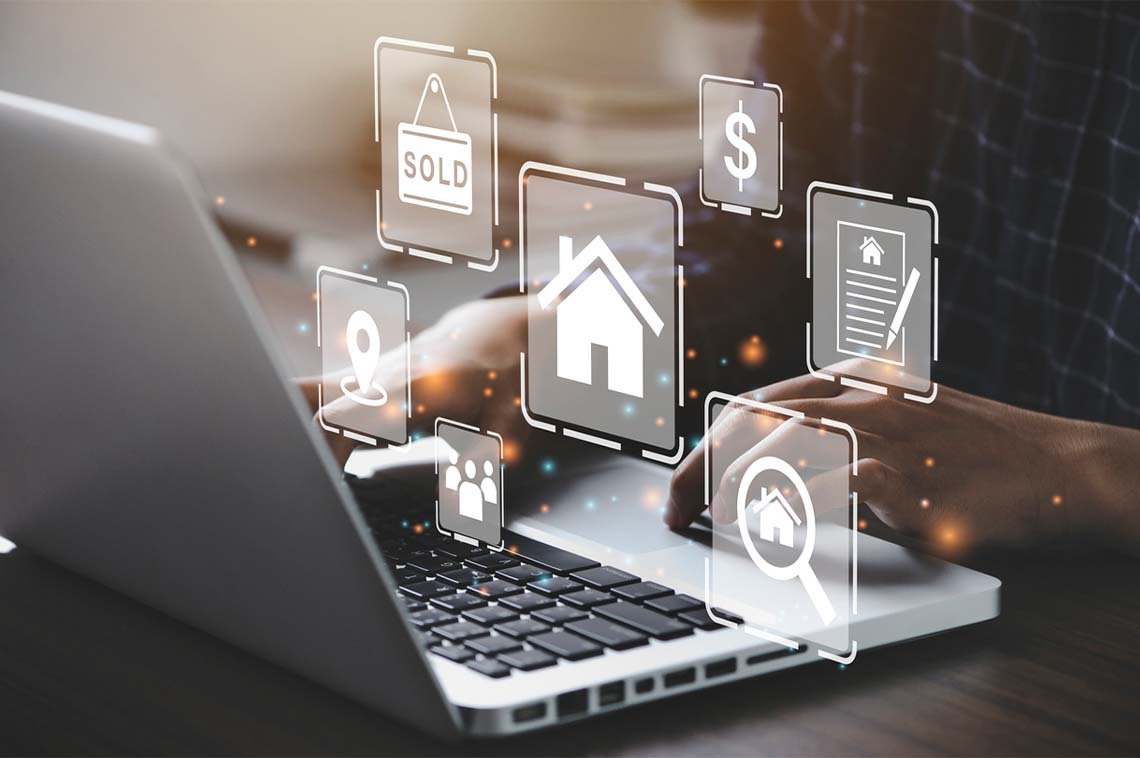The Landscape of Digital Property Tours

At its core, a digital property tour leverages technology to allow individuals to explore a property remotely, offering a visual and interactive experience that mimics or even enhances a physical visit. This has become an indispensable tool in modern real estate.
A. Foundational Technologies Powering Digital Tours
- High-Resolution Photography: While not new, its strategic application is crucial. Professional-grade wide-angle photography captures the breadth and depth of rooms, providing clear, well-lit static images that form the basic visual foundation of any online listing. This is the first impression.
- Professional Videography: High-quality video walkthroughs offer a guided tour, showcasing the flow of a property, highlighting key features, and providing a sense of scale and atmosphere that static photos cannot. Drone videography adds an aerial perspective, revealing neighborhood context and property boundaries.
- 3D Virtual Tours (Matterport, Zillow 3D Home, etc.): These are interactive, navigable digital models of a property, often created using specialized 3D cameras. Users can “walk through” the space at their own pace, rotate views, zoom in on details, and get a realistic sense of layout and dimension. They often include floor plans integrated directly into the tour.
- Virtual Reality (VR) Experiences: Taking immersion a step further, VR tours allow users with a VR headset to experience a property as if they were physically there, offering unparalleled realism and depth. These are particularly impactful for unbuilt properties or high-end developments.
- Augmented Reality (AR) Applications: While less common for full tours, AR can overlay digital information onto the real world (e.g., visualizing furniture in an empty room via a smartphone camera, seeing property boundaries on a physical lot). This enhances decision-making by allowing prospective buyers to personalize spaces.
- Interactive Floor Plans and Dollhouse Views: Integrated into 3D tours, these provide a bird’s-eye view of the entire property layout, helping users understand spatial relationships and flow, often with clickable points to jump to specific rooms.
- Digital Staging and Furnishing: For empty properties, digital staging uses software to virtually furnish and decorate rooms. This helps prospective buyers visualize the potential of a space without the cost and effort of physical staging, making empty rooms feel warm and inviting.
B. Connectivity and Accessibility
- High-Speed Internet: Reliable and fast internet connectivity is paramount for streaming high-resolution videos and interactive 3D models smoothly, ensuring a seamless user experience.
- Mobile Optimization: Digital tours must be optimized for mobile devices (smartphones, tablets) as a significant portion of property searches occur on these platforms. Responsiveness across different screen sizes is crucial.
- Cross-Platform Compatibility: Tours should be accessible across various web browsers and operating systems, maximizing reach and user convenience.
- Accessibility Features: Incorporating features like captions for videos, keyboard navigation for interactive elements, and clear contrast for visual elements ensures tours are accessible to users with disabilities.
Benefits of Digital Property Tours
The widespread adoption of digital property tours offers a multitude of advantages that benefit all stakeholders in the real estate ecosystem.
A. Enhanced Reach and Wider Audience Engagement
- Global Accessibility: Digital tours break down geographical barriers, allowing prospective buyers from anywhere in the world to view properties. This is particularly beneficial for international investors or those relocating across long distances, including from abroad to Indonesia.
- 24/7 Availability: Properties can be “viewed” at any time, day or night, eliminating scheduling conflicts and allowing interested parties to explore at their convenience, often leading to more immediate engagement.
- Increased Leads and Qualified Viewers: The comprehensive nature of digital tours helps pre-qualify leads. Only genuinely interested buyers who have already extensively explored the property virtually are likely to request a physical viewing, saving time for both buyers and agents.
- Broader Marketing Appeal: Listings with high-quality digital tours stand out significantly in crowded online marketplaces, attracting more clicks, shares, and overall attention. This enhances the property’s online visibility and marketability.
B. Unparalleled Convenience and Time Efficiency
- Reduced Travel Time and Costs: Buyers can “visit” multiple properties without the need for extensive travel, saving significant time, fuel costs, and logistical effort. This is invaluable for busy individuals or those searching in a new city.
- Efficient Agent Workflows: Agents can send digital tours to multiple clients simultaneously, reducing the need for numerous in-person showings, particularly for properties that don’t match specific client criteria. This allows agents to focus on high-value activities.
- Faster Decision-Making: The immersive and comprehensive nature of digital tours helps buyers make more informed decisions more quickly, accelerating the sales cycle. They can revisit the tour as many times as they need.
- Remote Collaboration: Family members, advisors, or business partners located in different places can collectively view and discuss a property simultaneously, facilitating collaborative decision-making without needing to be physically together.
C. Improved Transparency and Trust
- Realistic Representation: Digital tours, especially 3D and VR, provide an accurate and realistic depiction of a property’s layout, size, and condition, minimizing surprises during physical visits and building trust with potential buyers.
- Reduced Misrepresentation: The immersive nature of these tours makes it harder for sellers or agents to misrepresent a property, as details are clearly visible, fostering greater honesty in listings.
- Enhanced Buyer Confidence: When buyers feel they have a complete and accurate understanding of a property before committing, it builds confidence in their decision, leading to smoother transactions and fewer buyer’s remorse issues.
- Standardized Viewing Experience: Every potential buyer experiences the property in the same, consistent way, ensuring fairness and equal access to information.
D. Cost-Effectiveness and Sustainability
- Lower Showing Costs: For sellers, fewer physical showings mean less disruption, lower utility costs during showings, and reduced cleaning expenses.
- Reduced Carbon Footprint: By minimizing physical travel for viewings, digital property tours contribute to a lower carbon footprint, aligning with broader sustainability goals in the real estate sector.
- Efficient Marketing Spend: Investing in high-quality digital tours can be more cost-effective in the long run than traditional, less targeted marketing efforts, as they attract more qualified leads.
Key Trends in Digital Property Tour Evolution

The capabilities of digital property tours are constantly expanding, driven by advancements in technology and creative applications.
A. AI and Machine Learning Integration
- AI-Powered Personalization: AI algorithms can analyze a user’s viewing history, preferences, and demographics to suggest properties and highlight features within digital tours that are most relevant to them, creating a truly personalized experience.
- Automated Tour Generation: AI can potentially automate aspects of tour creation from floor plans or initial photo sets, reducing manual effort and cost.
- Natural Language Processing (NLP) for Search: Voice-activated search within digital tours allows users to ask questions about specific rooms or features and receive immediate, relevant information.
- Sentiment Analysis from Viewer Data: AI can analyze viewer engagement data (e.g., how long users spend in certain rooms, what they click on) to provide valuable insights to sellers and agents about what features are most appealing or concerning.
B. Enhanced Interactivity and Customization
- Virtual Staging with Customization: Beyond pre-staged empty rooms, future tours might allow users to virtually redecorate spaces with their own chosen furniture styles, paint colors, or even structural modifications (e.g., knocking down a wall) within the digital environment.
- Integrated Information Overlays: Digital tours can incorporate interactive “hotspots” or overlays that provide detailed information on specific features (e.g., appliance brands, energy efficiency ratings, school districts, neighborhood amenities) directly within the virtual walk-through.
- Live Virtual Open Houses: Agents can host live, interactive virtual open houses where they guide multiple viewers through a digital tour, answer questions in real-time via chat or video, and engage with potential buyers collectively.
- Gamification Elements: Incorporating gamified elements, such as virtual scavenger hunts for property features or challenges, could increase engagement and memorability for younger audiences.
C. Integration with Metaverse and Spatial Computing
- Metaverse Property Showrooms: The emerging metaverse offers the potential for persistent, immersive virtual property showrooms where developers can showcase entire projects, allowing buyers to explore a virtual neighborhood and customize homes within a digital environment.
- Hyper-Realistic Digital Twins: Advancements in spatial computing will lead to even more photorealistic and interactive digital twins of properties, blurring the lines between the virtual and physical.
- NFTs and Digital Ownership: While speculative, the concept of non-fungible tokens (NFTs) could eventually play a role in representing aspects of property ownership or access within virtual real estate ecosystems.
D. Focus on Sustainability and Wellness Features
- Energy Performance Visualization: Digital tours can visually highlight and explain a property’s energy efficiency features (e.g., solar panels, insulation, smart thermostats) and project potential utility savings.
- Healthy Home Indicators: Information overlays could display real-time data on indoor air quality, natural light levels, and water purity, appealing to buyers prioritizing health and wellness.
- Green Building Certifications Highlighted: Digital tours can prominently feature a property’s green building certifications (e.g., LEED, EDGE, Green Mark in Indonesia) and explain the benefits to environmentally conscious buyers.
Challenges and Strategic Considerations for Implementation
While the benefits are clear, successfully implementing and leveraging digital property tours comes with its own set of challenges.
A. Challenges
- Initial Investment in Technology: Creating high-quality 3D tours, professional video, and VR experiences requires specialized equipment, software, and skilled personnel, which can represent a significant upfront investment for real estate firms or individual agents.
- Technical Expertise: Operating advanced cameras, stitching software, and managing digital assets requires a certain level of technical proficiency. Not all agents or small firms may possess this in-house.
- Maintaining Realism vs. Over-Staging: While digital staging is beneficial, there’s a fine line between enhancing a property’s appeal and misrepresenting it. Overly glossy or unrealistic digital enhancements can lead to buyer disappointment during physical visits.
- Internet Connectivity Issues: For viewers in areas with slow or unreliable internet, high-resolution digital tours can buffer or fail to load, creating a frustrating experience and limiting accessibility. This is a real concern in some remote areas of Indonesia.
- Data Storage and Management: High-resolution digital assets (photos, videos, 3D models) require substantial storage space and robust content management systems.
- Rapidly Evolving Technology: The PropTech landscape changes quickly. Keeping up with the latest software, hardware, and best practices requires continuous learning and investment.
B. Strategic Implementation and Best Practices
- Prioritize Quality Over Quantity: A few high-quality photos and one well-executed 3D tour are far more effective than dozens of blurry photos and a shaky video. Invest in professional services for critical properties.
- Integrate All Digital Assets: Don’t just embed a video; integrate 3D tours, interactive floor plans, and drone footage seamlessly into your property listing page for a comprehensive experience.
- Optimize for Mobile First: Ensure your digital tours are responsive and load quickly on smartphones and tablets, as this is how most potential buyers will first encounter them.
- Educate Your Audience: Provide clear instructions on how to use the digital tours, especially for those unfamiliar with 3D navigation or VR. Highlight key features within the tour.
- Leverage for Pre-Qualification: Use digital tours as a primary screening tool. Only schedule in-person visits for highly interested, pre-qualified buyers who have already explored the property digitally.
- Combine Digital with Physical: While digital tours are powerful, they rarely eliminate the need for a physical visit entirely. Use them to enhance the physical showing by providing context and allowing buyers to revisit details.
The Future of Property Viewings
The trajectory of digital property tours points towards an even more integrated, intelligent, and immersive future.
A. Hyper-Personalized and AI-Driven Experiences
- Adaptive Tours: Tours that adapt dynamically based on the viewer’s explicit preferences or inferred interests, highlighting relevant features and skipping irrelevant ones.
- Conversational AI Agents: AI chatbots or voice assistants integrated into tours that can answer questions about the property, neighborhood, or financing in real-time.
B. Full Integration with the Transaction Process
- Virtual Open Houses with Instant Offers: Live virtual open houses where viewers can ask questions, engage with agents, and even submit offers directly through the platform.
- Digital Closing Integration: Seamless transition from virtual viewing to digital documentation, e-signatures, and online closing processes, creating a fully digital property journey.
C. The Rise of “Phygital” Real Estate
- Blended Experiences: The future will likely see a seamless blend of physical and digital interactions, with digital tours driving initial interest and qualification, followed by highly targeted and efficient physical visits.
- Augmented Showings: Agents might use AR during physical showings to overlay property data, show renovation possibilities, or visualize furniture in real-time for buyers.
D. Focus on Accessibility and Inclusivity
- Universal Design in Digital Tours: Greater emphasis on ensuring digital property tours are accessible to all, including those with visual, auditory, or mobility impairments, providing alternative navigation and descriptive audio.
- Multilingual Support: Digital tours with integrated translation options to cater to a global audience, especially crucial for international investment markets.
Conclusion
Digital property tours have irrevocably transformed the real estate landscape, ushering in an era of unprecedented accessibility, convenience, and transparency. From immersive 3D walkthroughs and compelling video content to the emerging power of AI and AR, these technologies are empowering prospective buyers and renters to explore properties with unparalleled depth and efficiency. While challenges related to investment, technical expertise, and digital divides persist, the undeniable benefits for reach, time-saving, and enhanced trust ensure their continued evolution and widespread adoption. For anyone engaged in the property market, embracing these digital innovations is no longer an option but a necessity. By investing in quality, prioritizing user experience, and strategically integrating these tools, we can collectively unlock the full potential of digital property tours, making the dream of finding the perfect home a seamless and engaging reality, no matter where you are in the world, including right here in Indonesia.













